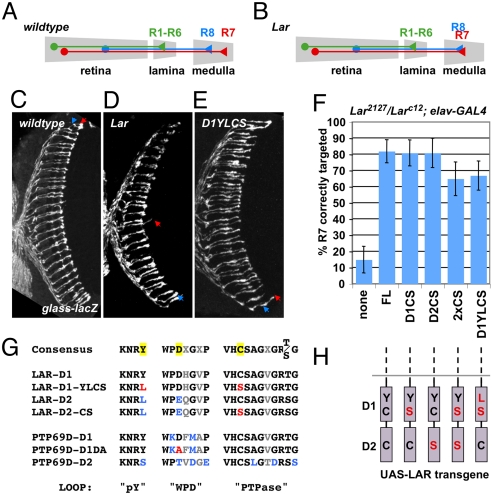Fig. 1.
Phosphatase activity of LAR is dispensable for R7 targeting. (A and B) Schematic representation of the photoreceptor axon projection pattern in wild-type (A) and Lar mutants (B). (C–E) Horizontal sections of adult heads carrying glass-lacZ to label all photoreceptors, stained with anti-β-galactosidase. Arrowheads indicate the target layers of R8 (blue) and R7 (red). (C) Wild-type; (D) Larc12/Lar2127; (E) Larc12/Lar2127, elav-GAL4; UAS-LARD1YLCS/+. (F) Horizontal sections like those shown in (C–E) were scored for R7 targeting defects. In Larc12/Lar2127, elav-GAL4 mutants, only 15% of R7 axons project beyond the R8 layer, while addition of the indicated UAS-LAR transgenes significantly increased this percentage (FL 82%, D1CS 83%, D2CS 81%, 2xCS 65%, D1YLCS 67%). A schematic of the LAR phosphatase domains with the introduced point mutations in red is shown in (H). (G) Sequence comparison of highly conserved structural motifs in domains D1 and D2 of Drosophila LAR and PTP69D with the corresponding consensus sequences (32). Variable amino acid residues are shown in gray, residues deviating from the consensus in blue, and residues mutated in this study are highlighted yellow in the consensus sequences and shown in red in the construct sequences.

